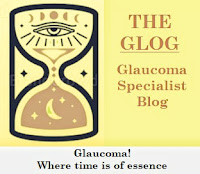Minimally invasive glaucoma surgery (MIGS) offers safer, less invasive alternatives to traditional surgical procedures. Advantages include faster recovery, shorter operations and reduced medication burden via trabecular-bypass or suprachoroidal routes. There is increasing evidence of efficacy justifying adoption and integration into modern glaucoma care, yet considerable inconsistency in practice remains, emphasising the need for guidelines.
Members of UK and Eire Glaucoma Society (UKEGS) have performed a nationwide survey to assess variations in practice and gaps in current policies on MIGS.
The survey found that there was a firm belief among the respondents that MIGS procedures have an important role in glaucoma management and that they can slow vision loss (95%, n = 76), reduce the need for further pressure-lowering incisional glaucoma surgery (94%, n = 75) and lower the burden of medical therapy (98%, n = 78).
There were some differences in opinion about whether MIGS might divert resources from more critical areas, with 57% (n = 45) expressing this concern, whilst 44% (n = 35) disagreed: highlighting the need for robust cost-effectiveness data to guide resource allocation.
When asked who should be offered MIGS procedures, responses varied: 33% (n = 26) favoured offering MIGS to a minority of carefully selected patients, 55% (n = 44) supported use for all patients taking intraocular pressure-lowering medications, 16% (n = 13) advocated offering MIGS to all glaucoma patients and 5% (n = 4) selected none of these options.
These findings emphasise the need to establish clear guidelines for standardising patient selection, ensuring that the treating surgeon possesses a comprehensive understanding of glaucoma progression, risk assessment, and alternative treatments options. Such expertise is typically limited to those trained in the subspecialty.
When asked whether MIGS procedures should be confined to glaucoma specialists, 88% (n = 70) agreed, 85% (n = 67) believed MIGS should not be carried out by surgeons whose primary focus is cataract surgery. This is a valid concern: while carrying out MIGS may be technically feasible, selecting the correct procedure is more complex. The growing range of devices and techniques—often lacking RCT evidence—means balancing immediate risks against long-term benefits demands a detailed understanding of prognosis as well as surgical expertise.
Areas of concern:
The survey raised concerns about independent sector treatment centres (ISTCs) performing MIGS or cataract surgery in glaucoma patients. ISTCs may not be best placed to provide the specialised expertise for the complexities of selecting appropriate MIGS and still less so the careful provision of long-term follow-up patients require.
A major concern is the lack of counselling about MIGS during surgical consultations for glaucoma patients. Not discussing these procedures risks missed opportunities to optimise intraocular pressure control, reduce medication burden, and enhance quality of life. Standardising this discussion could help reduce disparities in access and ensure equitable, comprehensive care.
Future outlook:
Most respondents (61%, n = 48) deemed the process of introducing these new procedures achievable, with 30% (n = 23) describing it as straightforward. However, 10% (n = 8) identified the process as challenging, reflecting mixed institutional readiness. Looking ahead, 78% (n = 62) anticipated an increase in the use of MIGS at their respective hospitals, signalling growing confidence in its clinical benefits and integration into glaucoma management.
Based on these findings, the UKEGS recommends the following guidelines:
- The decision to perform MIGS should be made by the clinician overseeing a patient’s long-term glaucoma care, with the procedure only being performed by surgeons with specialist training and experience in managing the condition over time
- Ensure all glaucoma patients undergoing cataract surgery are offered MIGS and made aware of the potential benefits.
- Develop standardised materials to educate patients on MIGS and the evidence to help decision-making.
- Limit MIGS use in independent sector treatment centres (ISTCs) to surgeons with glaucoma fellowship training.
REFERENCE:
Abdus Samad Ansari et al. Building consensus on MIGS: insights from a UKEGS survey. Eye volume 39, pages2107–2109.












